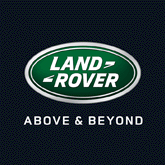The Evolution of Land Rover
Land Rover's journey began in 1948 when the first Series I model was introduced at the Amsterdam Motor Show. Inspired by the military jeeps used during World War II, the vehicle was designed to be a rugged and versatile all-terrain automobile. Its aluminum body, lightweight construction, and four-wheel drive capabilities made it an instant success.
Throughout the 1950s and 1960s, Land Rover refined its design, introducing the Series II and Series III models. These vehicles became synonymous with exploration, being used in expeditions across Africa, Asia, and South America. The Defender, introduced in 1983, further cemented Land Rover’s reputation for toughness and reliability.
The late 20th century saw Land Rover expand beyond utilitarian vehicles. The launch of the Range Rover in 1970 marked the beginning of the luxury SUV segment, blending comfort with off-road capability. The Discovery, introduced in 1989, targeted a broader audience, offering a family-friendly SUV with Land Rover’s signature ruggedness.
Tradition Meets Innovation
One of Land Rover’s key strengths is its ability to retain its heritage while embracing innovation. The design philosophy remains rooted in the brand’s original identity—boxy shapes, commanding presence, and unparalleled off-road prowess. However, modern Land Rovers incorporate state-of-the-art technology, including advanced terrain response systems, hybrid powertrains, and AI-assisted driving features.
For example, the latest Range Rover models feature adaptive suspension, all-wheel steering, and electrified powertrains, ensuring both luxury and sustainability. The Defender’s modern iteration, released in 2020, retains its iconic silhouette but integrates digital dashboards, configurable terrain response, and lightweight aluminum architecture.
These innovations allow Land Rover to cater to contemporary consumer demands while preserving the authenticity that has defined the brand for over seven decades.
Key Land Rover Models
Series I, II, and III (1948-1985) – The original workhorse that established Land Rover’s reputation for durability.
Range Rover (1970-present) – A pioneer in luxury off-road vehicles, blending elegance with adventure.
Defender (1983-present) – An icon of resilience, designed for extreme conditions and updated for the modern era.
Discovery (1989-present) – A family-friendly SUV with true off-road capabilities.
Evoque (2011-present) – A compact SUV that redefined urban luxury while maintaining Land Rover’s adventurous spirit.
Authenticity Matters: Lessons from Land Rover
Land Rover’s ability to balance heritage with innovation offers a lesson in authenticity. Just as Land Rover stays true to its original values while integrating modern advancements, content creators must uphold originality in their work while adapting to new trends. In the digital age, maintaining authenticity is crucial, whether in automotive engineering or content creation.
Ensuring uniqueness and respecting intellectual property is as vital in writing as it is in branding. Tools like Paper-checker.com help writers verify the originality of their work, just as Land Rover engineers ensure each vehicle remains true to its DNA while meeting modern standards.
Conclusion
Land Rover's story is one of evolution, resilience, and a commitment to authenticity. From the rugged Series I to the high-tech Range Rover and Defender, the brand has successfully merged its heritage with innovation. As it moves towards an electric future, Land Rover continues to uphold the values that made it legendary. In the same way, content creators must balance originality with innovation, ensuring their work stands the test of time—just like Land Rover itself..


